Note: This article pertaining to Scenic Bear Mountain Bridge in New York was originally published on Thursday, September 10, 2020 at 3:41 in the morning and has been updated.
The first thought which may come to your mind with the name Hudson River might be Manhattan. Perhaps New Jersey or the Lincoln Tunnel or Holland Tunnel or George Washington Bridge — or even pollution or garbage scows — would be what you would initially imagine…
Scenic Bear Mountain Bridge in New York
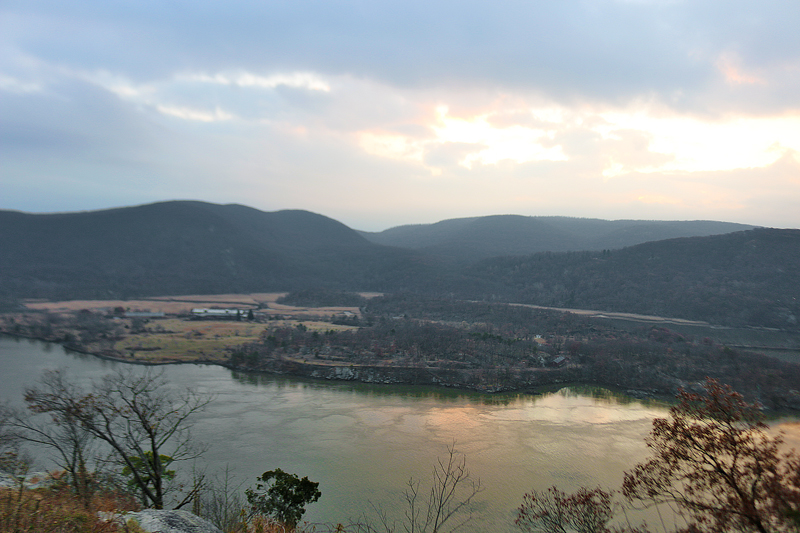
…but if you head almost 40 miles north of the George Washington Bridge — which spans the Hudson River between upper Manhattan and Fort Lee in New Jersey — you are transformed into an almost seemingly idyllic landscape of sloping hills and small mountains covered with trees at which the Hudson River is not quite as wide or as busy…
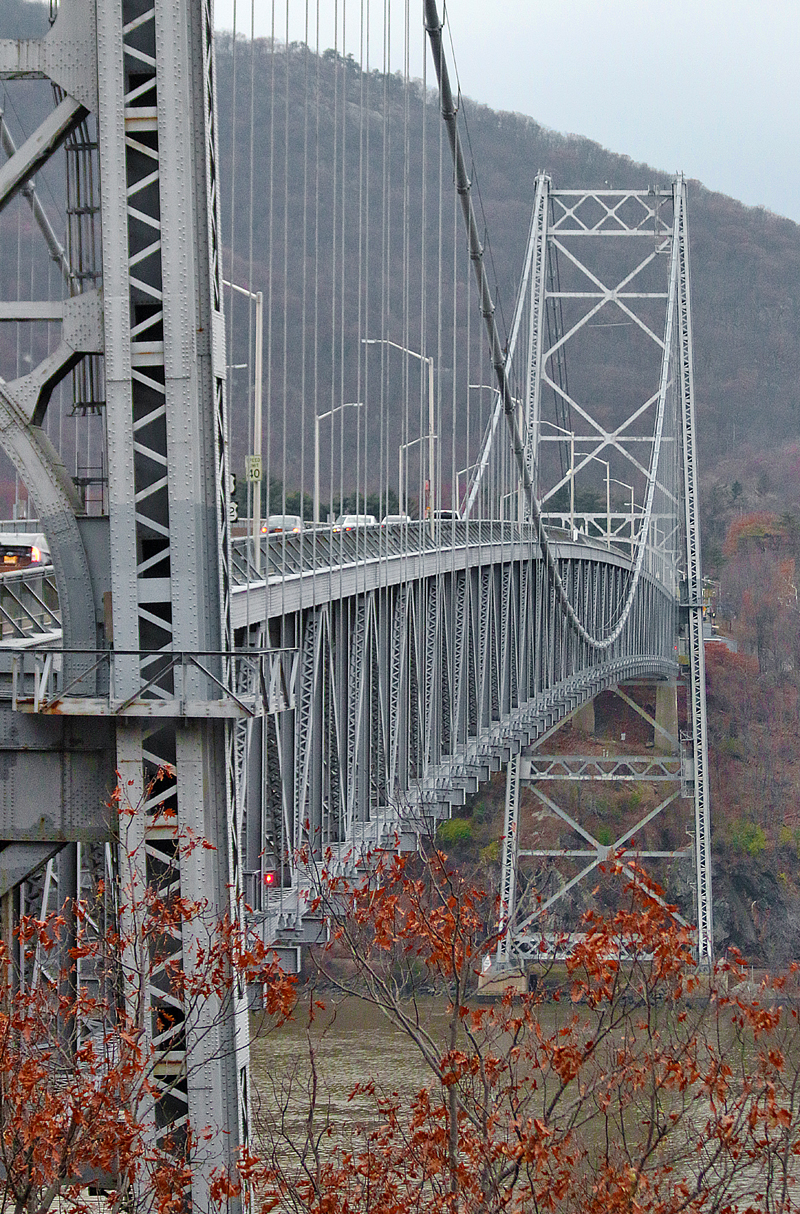
…and that is where you will find the Bear Mountain Bridge, which was opened to the public on Thursday, November 27, 1924 at an initial cost of $2,900,000.00; and it carries both United States Highway 6 and United States Highway 202 for its length of 2,255 feet across the tranquil Hudson River between Bear Mountain State Park to the west and the town of Cortlandt to the east.
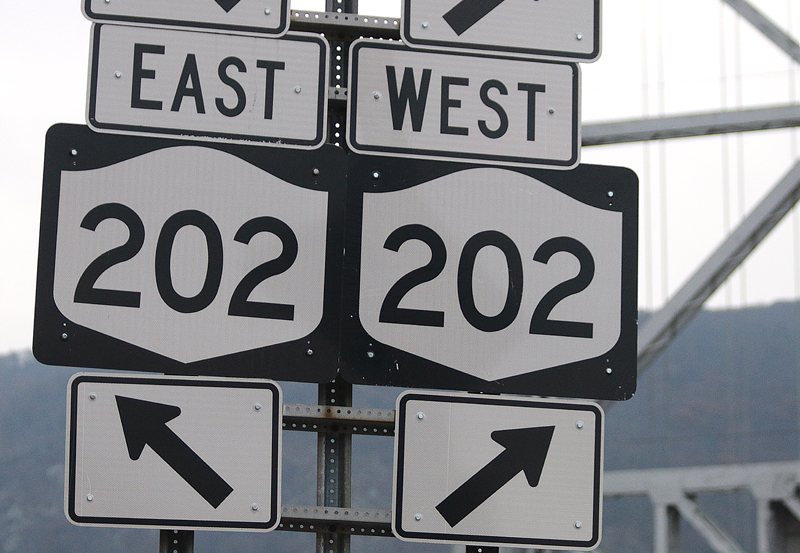
Time for a version of What is Wrong With This Photograph? Can you identify what is wrong with the photograph shown above, which would be unfair to display by itself without being in the proper context?
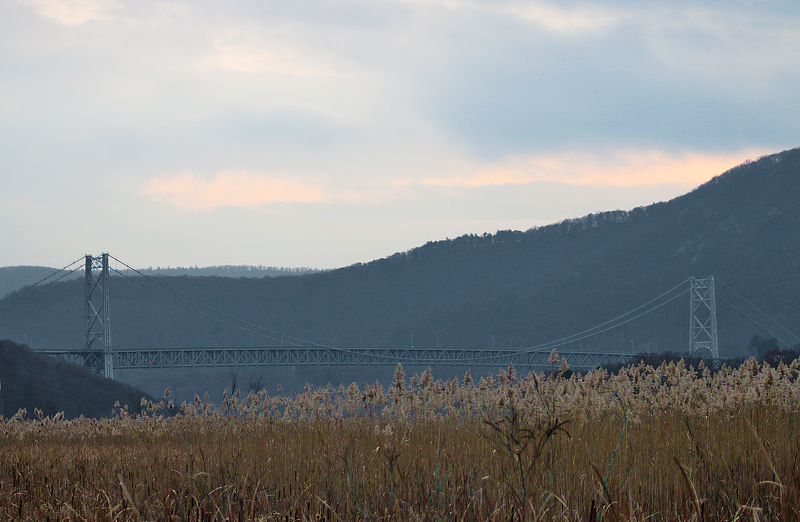
“As the oldest of NYSBA’s bridges, Bear Mountain Bridge was the first vehicular river crossing between New York City and Albany. At the time it was built, it was also the longest suspension bridge in the world and the first suspended bridge to have a concrete deck”, according to the official Internet web site of the New York State Bridge Authority, which assumed stewardship of the bridge almost 80 years ago on Thursday, September 26, 1940. “…annual traffic has grown from just under 483,000 vehicle crossings at the end of WWII to more than 7.8 million in 2019, its 95th anniversary year.”
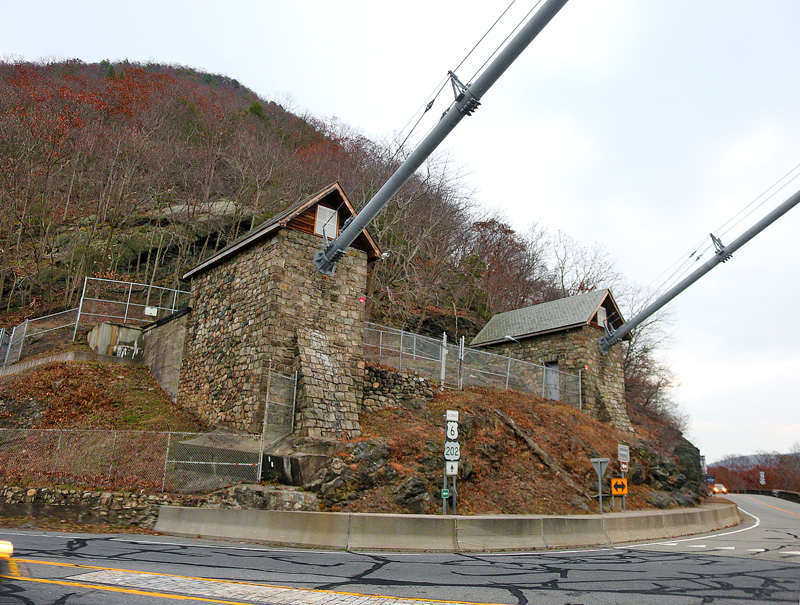
The eastern end of the bridge is anchored at what is known as Anthony’s Nose — and one can observe the bridge and its surroundings from the viewpoint at the top. I did not have enough time to park my rental vehicle at the trailhead off of New York State Highway 9D to hike up to the viewing point. Work on the highway approach on the east side of the bridge began in April of 1923, as the road was cut out of the south face of Anthony’s Nose to the east at an elevation of 410 feet above the river. In 2006, additional support cables were constructed and a supplemental anchorage was embedded into the bedrock on the south side of the bridge. These new cables allow the New York State Bridge Authority to constantly monitor changing conditions.
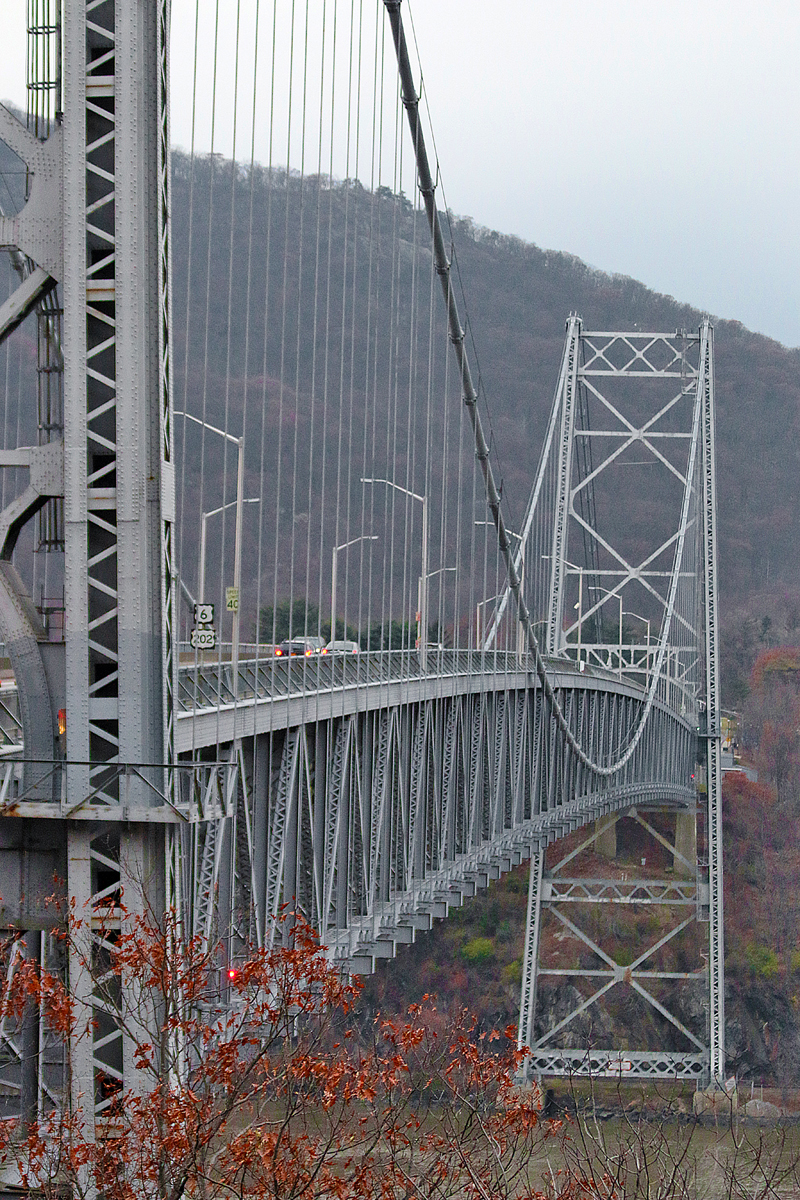
Almost the entire structure of the roadway required excavation and fill. Due to the granite terrain, 70 percent of the material had to be drilled and blasted. The road was accessible only at the eastern end; and — to add to the complexity of the construction — the New York Central Railroad tracks where situated directly below 5,000 feet of the highway, which meant that all methods of construction in this section of the highway had to revolve around the continuous and safe operation of the railroad.

What was then the longest suspension bridge in the world was completed without the loss of a single life only a mere 20 months and four days after the contract was signed.

The photograph above shows the view across the Hudson River towards the northwest from the eastern side of the bridge.
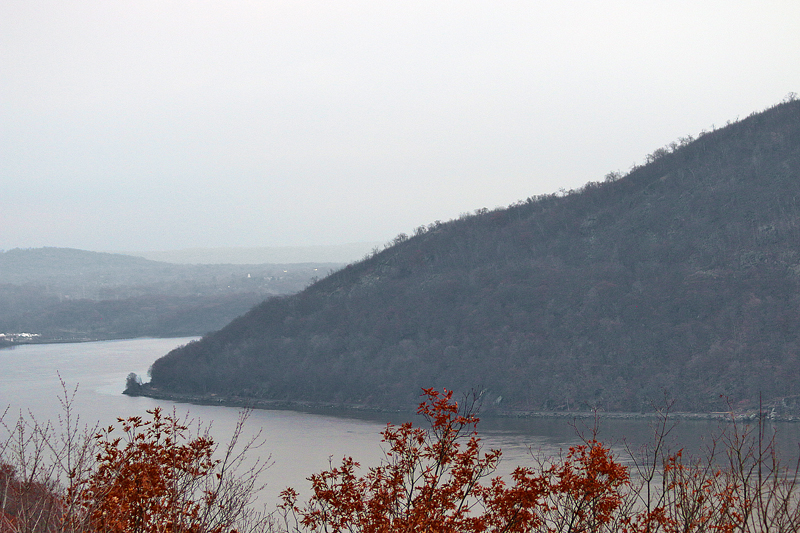
Bear Mountain State Park is on the right when looking southward along the Hudson River towards the city of New York from the bridge…
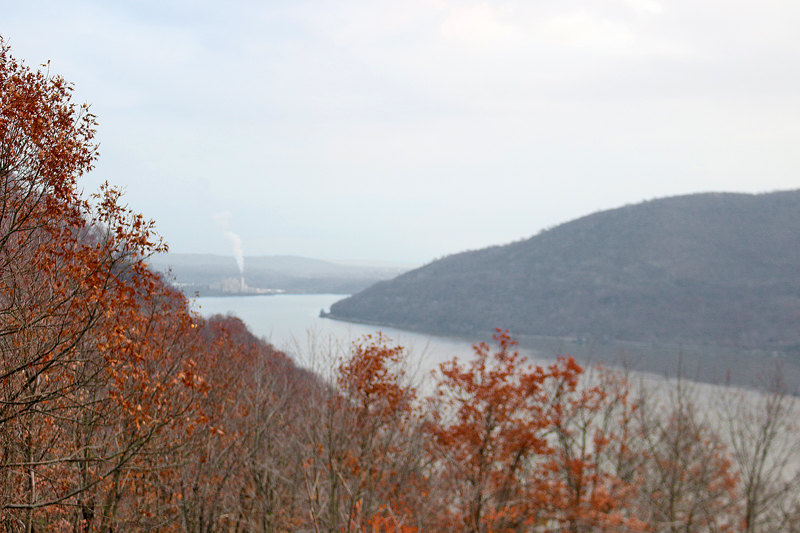
…and already, the first sign of industrialism is in plain view in the form of an active smokestack of an incineration plant in Peekskill — ruining the picturesque beauty and almost acting as a precursor to the dense population inhabiting the concrete and steel domiciles and structures which line each shore of the Hudson River in New York and New Jersey.
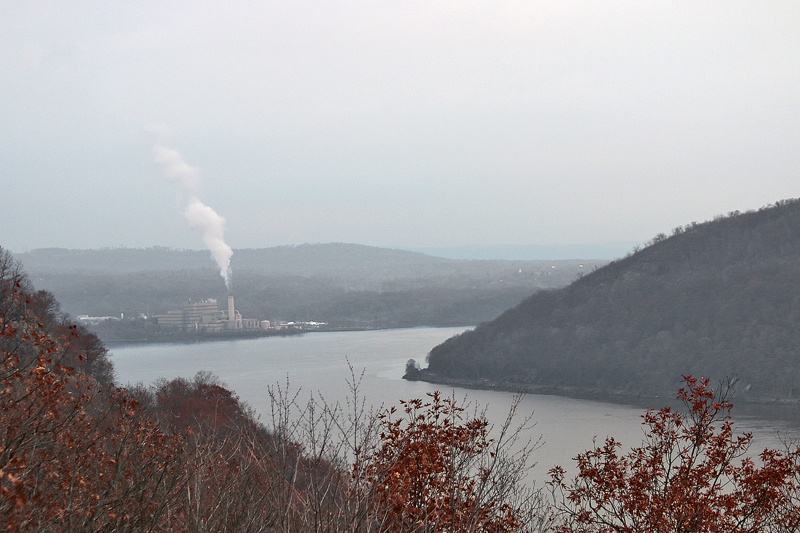
Final Boarding Call
The toll to cross the Bear Mountain Bridge is $2.15 — or $1.65 if you use the electronic toll collection system which is known as E-Z Pass — which only motorists in passenger automobiles traveling eastbound are required to pay, as no toll is charged for westbound traffic.
As a comparison, the toll to cross the George Washington Bridge is considerably more expensive at currently $22.38 — or as low as $14.06 during off peak hours or $16.06 during peak hours if you use the electronic toll collection system which is known as E-Z Pass — which only motorists in passenger automobiles traveling eastbound from New Jersey into New York are required to pay, as no toll is charged for westbound traffic.
You can travel approximately 84 miles round trip and save as much as $20.23 in tolls by using the Bear Mountain Bridge for access into the city of New York instead of the George Washington Bridge if you do not mind using significantly more fuel to travel almost 95 minutes without traffic — but you do get treated to some very nice scenery along the way…
…and if you do decide to go crazy and do just that, ensure that you take Palisades Interstate Parkway north to get there, as it is one of the prettiest highways in the metropolitan area of New York and will take you directly to the bridge. Do not miss stopping at the scenic overlook at Rockefeller Lookout on your way north to see Manhattan and other areas of New York; and you can also consider stopping at Alpine Lookout and State Line Lookout.
Toll rates from exactly five years ago are shown below.
All photographs ©2017 by Brian Cohen.
On Thursday, September 10, 2020 — exactly five years ago — the toll to cross the Bear Mountain Bridge was $1.75 — or $1.35 if you use the electronic toll collection system which is known as E-Z Pass — which only motorists in passenger automobiles traveling eastbound are required to pay, as no toll is charged for westbound traffic.
As a comparison, the toll to cross the George Washington Bridge was considerably more expensive at $16.00 — or as low as $11.75 during off peak hours or $13.75 during peak hours if you used the electronic toll collection system which is known as E-Z Pass — which only motorists in passenger automobiles traveling eastbound from New Jersey into New York are required to pay, as no toll is charged for westbound traffic.
You can travel approximately 84 miles round trip and save as much as $14.25 in tolls by using the Bear Mountain Bridge for access into the city of New York instead of the George Washington Bridge if you do not mind using significantly more fuel to travel almost 95 minutes without traffic — but you do get treated to some very nice scenery along the way…

